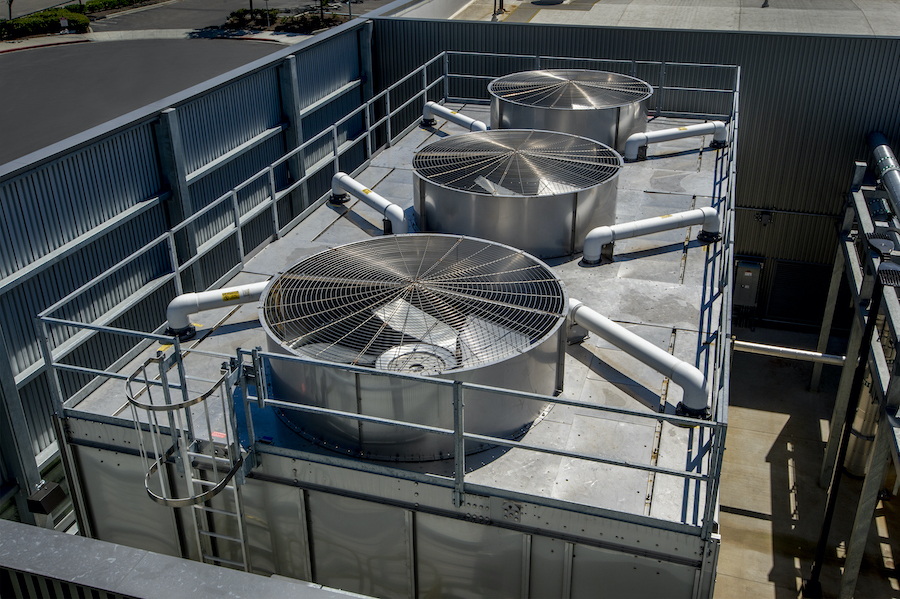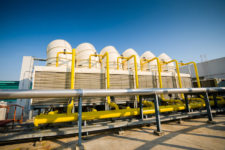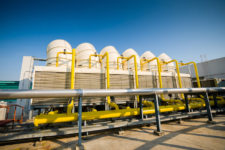A few years after strict cooling tower requirements were put into place in NYC, the threat of Legionella looms again. Find out what new rules the city is considering, get a refresher on cooling tower requirements during the COVID-19 emergency, and learn how stagnant systems can increase risk for Legionella bacteria.
Guidance from DOHMH on Returning Water Systems to Service
The DOHMH has officially released guidelines for restoring building water systems to service after a prolonged shutdown. Click here to read the details in full.
Per the DOHMH, “For all buildings that have been vacant or have had low occupancy due to the New York State (NYS) PAUSE executive order, additional maintenance is needed to restore the quality of the drinking water before a building is reoccupied.” These steps help lessen the risk of pathogens growing, including Legionella.
The DOHMH has laid out corrective actions for flushing out the system and maintaining appropriate temperatures (Table A) and for specific system components (Table B). They recommend you review these guidelines with your licensed plumbers, mechanical contractors, station engineers, water treatment operators, and building operation staff familiar with your systems.
Review the full guidelines for specific instructions on the water system at large, and various components (water fountains, ice machines, and more).
JULY UPDATE: New Finalized “Summer Only” Hyperhalogenation Rules
A newly finalized rule amendment establishes “a requirement for the performance of summertime hyperhalogenation” – a once-per-year dose of higher than normal levels of chlorine or bromine-based biocide between 7/1 – 8/31 of each year. This would help minimize the risks of Legionella bacteria growth. This, of course, is in addition to the existing regulations for cooling towers, which can be found here (any modifications because of COVID-19 are listed below, in the second section of this blog).
This rule is in effect immediately (as of early July), and the first annual hyperhalogenation dose must be completed before August 31st.
Here’s what you need to do:
- Read the rule amendment in full here
- Review the summertime disinfection requirement FAQ from the DOHMH
- Complete and submit the declaration form to the NYC Cooling Tower Registration Portal (required within 30 days after the dose)
Questions? Reach out to the DOHMH’s Cooling Tower division at CTcompliance@health.nyc.gov.
COVID-19 Modifications to Requirements
These changes (originally posted in our COVID-19 blog) outline updated guidance on cooling towers during the NYS PAUSE Executive Order.
General key points:
- Under New York State Executive Order 202.6, service providers for cooling tower systems that support “Essential Infrastructure” are exempt from work staffing reduction requirements during the pandemic
- Essential infrastructure examples include air conditioning, ventilation, refrigeration, industrial or manufacturing processing, and electric power generation
- Per the guidance, “building management must work with their service providers to continue to comply with cooling tower regulations (Local Law 77 and Title 24 of Chapter 8 RCNY) with an adjusted water quality monitoring schedule, if needed”
If your cooling tower is in operation:
- The building owner must coordinate essential services with operators and vendors and adhere to all cooling tower regulatory requirements.
- If the building has staffing shortages, follow an interim water quality monitoring schedule
- Bacteriological indicator and Legionella sampling requirements remain unchanged
- Avoid non-continuous operations even if heat loads vary. Circulate water for at least 4 hours every 3 days while applying chemical and biocides
If your cooling tower is off for the season:
- Delay startup until you have the appropriate staff to complete the startup procedures
- If you cannot delay startup, refer to the Startup Procedures for Cooling Towers Spring 2020 (linked here, on the second page)
To see the full guidance from the DOHMH, including updated start-up and shutdown procedures, click here. If you’re returning your building water systems to service, see the first section of this blog post for official DOHMH guidelines.
Increased Risk of Legionella?
According to an article in the New York Times, you may want to plan for increased risks at any structures that had less water use during this state of emergency (offices, hotels, facilities, etc.). Stagnant water sources may increase the presence of Legionella bacteria, which can have a greater impact on those with compromised immune systems – including COVID-19 patients and survivors.
The Times mentions solutions like high-dose disinfectants, raising temperatures, and flushing out old water in favor of a new supply. We recommend consulting with your qualified person/water treatment specialist on a thorough preventive plan, in addition to following guidelines outlined by the City.
Questions about documenting your required cooling tower routine & ensuring it gets done? Talk to us – InCheck has workflows for every city-required regimen so you can ensure the right steps are done the right way.




